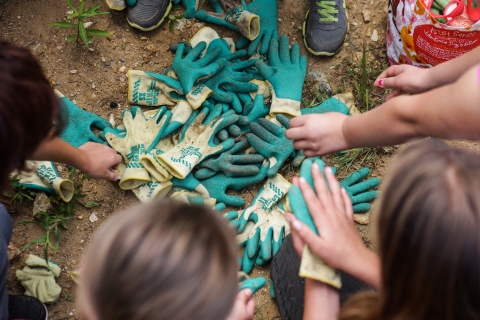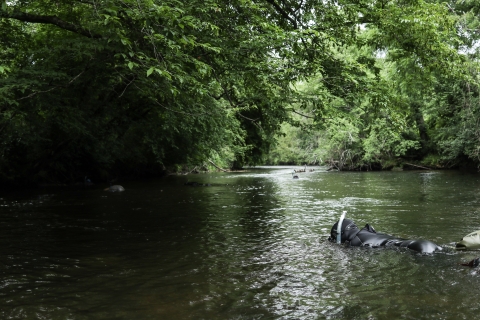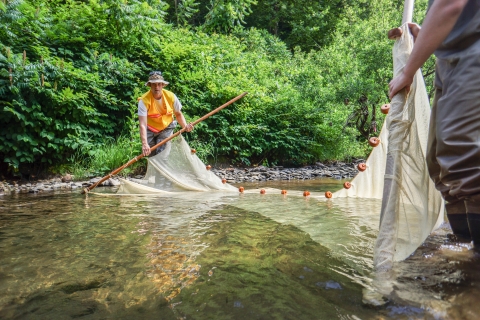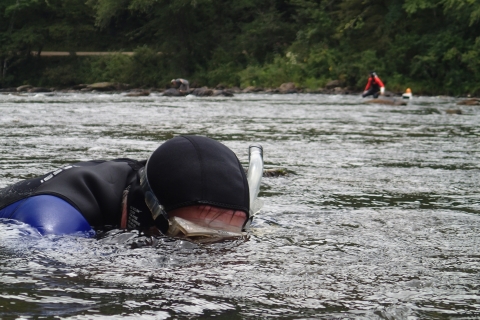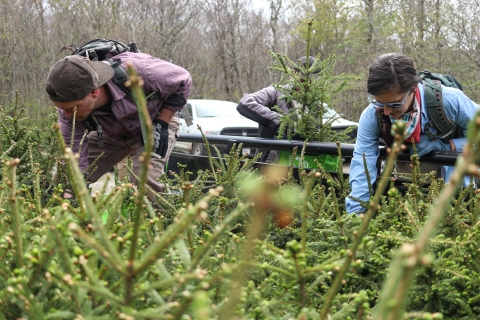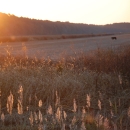Through its Partners for Fish and Wildlife Program, the U.S. Fish and Wildlife Service provides financial and technical assistance to private land owners, and local and tribal governments who want to improve fish and wildlife habitat on their land to benefit migratory birds and fish, and threatened and endangered species (see the link below for more general information about the program).
As applied in western North Carolina
In order to make the greatest impact on conservation, in western North Carolina we have identified project focus areas based on the presence of imperiled species, guidance from the North Carolina Wildlife Resources Commission’s wildlife action plan, input from partners, a successful track record for projects, and expectation of future success. The Asheville Field Office provides services to a handful of focus areas:
Southern Appalachian mountain bogs and fens
Focal counties -Ashe, Alleghany, Henderson, Macon, Transylvania, Wilkes counties
Focal species:
- Bunched arrowhead (Sagittaria fasciculata)
- Mountain sweet pitcher plant (Sarracenia rubra ssp. jonesii)
- Green pitcher plant (Sarracenia oreophila)
- Swamp pink (Helonias bullata)
- Bog turtle (Glyptemys muhlenbergii)
- Mountain purple pitcher plant (Sarracenia purpurea var. montana)
- Golden-winged warbler (Vermivor chrysoptera)
- Monarch butterfly (Danaus plexippus plexippus)
Types of habitat improvement supported
Stream and floodplain hydrologic restoration to prevent head-cutting, removal of hardwood encroachment, re-establishment of bog/meadow habitat, and invasive species invasive species
An invasive species is any plant or animal that has spread or been introduced into a new area where they are, or could, cause harm to the environment, economy, or human, animal, or plant health. Their unwelcome presence can destroy ecosystems and cost millions of dollars.
Learn more about invasive species eradication. Bog turtle nest and migration corridor protection through woody vegetation management and the installation of excluder devices for predator management.
French Broad River system
Focal counties -Buncombe, Henderson, Madison, Transylvania
Focal species
- Appalachian elktoe (Alasmidonta raveneliana)
- Gray bat (Myotis grisescens)
- Northern long-eared bat (Myotis septentrionalis)
- Virginia spiraea (Spiraea virginiana)
- Longsolid (Fusconaia subrotunda)
- Monarch butterfly (Danaus plexippus plexippus)
- Tricolored bat (Perimyotis subfalvus)
- Little Brown bat (Myotis lucifugus)
- Golden-winged warbler (Vermivor chrysoptera)
Types of habitat improvement supported
Fish passage and barrier removal, streambank stabilization, stream channel realignment, floodplain connection, in-stream structures, riparian riparian
Definition of riparian habitat or riparian areas.
Learn more about riparian buffer native tree and shrub establishment, and livestock exclusion.
Upper Nolichucky River system
Focal counties -Avery, Mitchell, Yancey
Focal species
- Appalachian elktoe (Alasmidonta raveneliana)
- Gray bat (Myotis grisescens)
- Virginia spiraea (Spiraea virginiana)
- Northern long-eared bat (Myotis septentrionalis)
- Tricolored bat (Perimyotis subfalvus)
- Little brown bat (Myotis lucifugus)
- Monarch butterfly (Danaus plexippus plexippus)
Types of habitat improvement supported
Fish passage and barrier removal, streambank stabilization, stream channel realignment, floodplain connection, in-stream structures, riparian buffer native tree and shrub establishment, and livestock exclusion.
Upper Little Tennessee River system
Focal counties - Graham, Jackson, Macon, Swain
Focal species
- Appalachian elktoe (Alasmidonta raveneliana)
- Littlewing pearlymussel (Pegias fabula)
- Gray bat (Myotis grisescens)
- Spotfin chub (Cyprinella monachus)
- Virginia spiraea (Spiraea virginiana)
- Northern long-eared bat (Myotis septentrionalis)
- Longsolid (Fusconaia subrotunda)
- Tennessee pigtoe (Pleuronaia barnesiana)
- Little brown bat (Myotis lucifugus)
- Tennessee clubshell (Pleurobema oviforme)
Types of habitat improvement supported
Fish passage and barrier removal, streambank stabilization, stream channel realignment, floodplain connection, in-stream structures, riparian buffer native tree and shrub establishment, and livestock exclusion.
High Elevation Spruce/Fir Forests, Rock Outcrops
Focal counties - North Carolina: Ashe, Alleghany, Avery, Buncombe, Caldwell, Graham, Haywood, Jackson, McDowell, Mitchell, Transylvania, Watauga, Yancey. Tennessee: Unicoi, Carter Johnson
Focal species
- Carolina northing flying squirrel (Glaucomys sabrinus coloratus)
- Spruce-fir moss spider (Microhexura montivaga)
- Rusty-patched bumble bee (Bombus affinis)
- Rock gnome lichen (Gymnoderma lineare)
- Spreading avens (Geum radiatum)
- Roan Mountain bluet (Houstania montana)
- Blue Ridge goldenrod (Solidago spithamaea)
- Heller’s blazing star (Liatris helleri)
- Golden-winged warbler (Vermivor chrysoptera)
- Monarch butterfly (Danaus plexippus plexippus)
Types of habitat improvement supported
Propagate and plant spruce and fir seedlings, spruce/fir matrix-rock outcrops, thin woody vegetation, and invasive species eradication.

